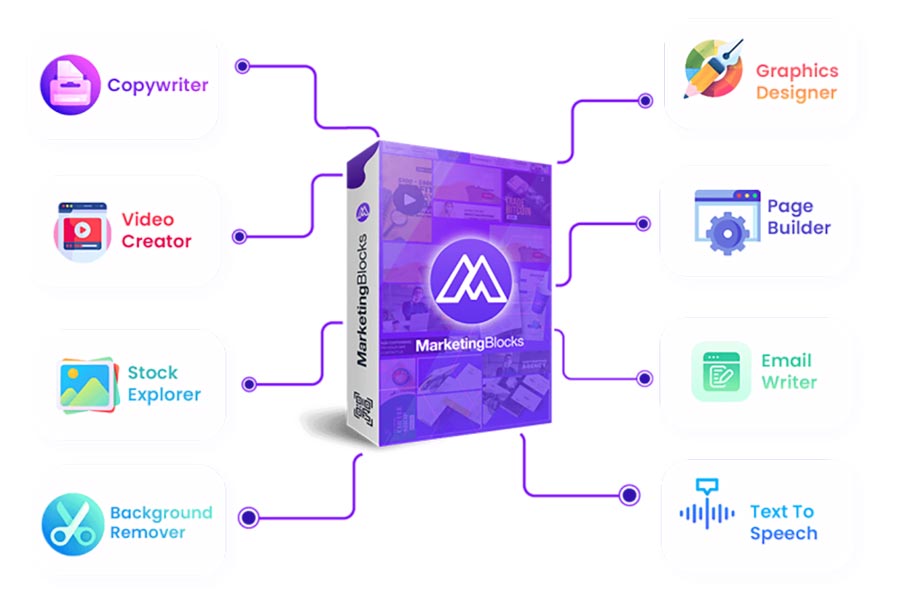Unleashing the Magic of Storytelling in Advertising: A Guide

Introduction
Storytelling uses words, images, and other media to communicate a narrative or message. It has been used for centuries to pass down knowledge, traditions, and cultural values from one generation to the next. In advertising, storytelling creates an emotional connection with the audience and memorises a brand’s message.
“Stories are 22 times more memorable than facts and figures alone.”
— Wharton School of the University of Pennsylvania
The importance of storytelling in advertising lies in its ability to engage and connect with the audience on a deeper level. A well-crafted story can evoke emotions and create a memorable experience that stays with the audience long after the ad has ended. This emotional connection is crucial in establishing trust and building brand loyalty, making storytelling essential to a successful advertising campaign.
This blog explores the power of storytelling in advertising and its impact on brand recognition and recall. The article will examine the history of storytelling in advertising, the psychology behind its effectiveness, and techniques for creating compelling stories. Additionally, it will explore the challenges and benefits of using storytelling in advertising and provide examples of successful campaigns that have significantly leveraged the power of storytelling. By the end of this article, readers will have a deeper understanding of the role of storytelling in advertising and its potential for creating meaningful connections with audiences.
The History of Storytelling in Advertising
Early forms of storytelling in advertising
The use of storytelling in advertising dates back to the early days of print advertising, when marketers would use simple narratives and illustrations to communicate a message. In the 19th century, advertisements began to incorporate more intricate stories and images, reflecting the increasing sophistication of the medium. With the advent of radio and television, advertising storytelling became more sophisticated, using music, sound effects, and voiceovers to create a more immersive experience.
Evolution of storytelling in advertising over time

With the advent of digital technology, advertising storytelling has become increasingly sophisticated, allowing animation, interactive elements, and social media to create more engaging and memorable experiences for audiences. Brands can now tell stories that span multiple platforms, including websites, mobile devices, and social media, creating a more integrated and consistent brand experience. The rise of video marketing has also played a significant role in the evolution of advertising storytelling, allowing brands to create longer, more elaborate narratives that engage and captivate audiences.
“Brands that use storytelling in advertising have seen a 19% increase in sales.”
— Digiday
Critical examples of memorable storytelling in advertising
Over the years, many memorable examples of storytelling in advertising have existed. Some of the most notable include Apple’s “Think Different” campaign, which used iconic images and a powerful voiceover to tell a story of creativity and innovation. Another memorable example is Nike’s “Just Do It” slogan and accompanying ads, which use sports celebrities and motivational messaging to create a narrative of determination and perseverance. Another demonstration of the impact and effectiveness of storytelling in advertising can be seen in Old Spice’s “The Man Your Man Could Smell Like” campaign, which utilised humour and clever storytelling to effectively convey the brand’s message and leave a lasting impression on audiences. This serves as a testament to the power of storytelling in advertising.
The Psychology of Storytelling in Advertising
How storytelling appeals to emotions

Storytelling in advertising is highly effective because it appeals to emotions. When we hear a story, our brains are wired to empathise with the characters, creating an emotional connection with the narrative. This emotional connection is critical to the success of storytelling in advertising, as it helps to build brand loyalty and create a more memorable experience for the audience. Research has shown that ads that elicit an emotional response are more likely to be remembered and significantly impact consumer behaviour.
The Role of Empathy in Storytelling
Empathy is a critical component of storytelling in advertising. When an ad elicits empathy for the characters, it creates a powerful emotional connection that helps build trust with the audience. Empathy leads to a greater understanding and appreciation of the characters and their experiences, making the story more relatable and memorable. By tapping into emotions such as joy, sadness, fear, or excitement, storytelling in advertising can create a lasting impact on the audience.
The Impact of Storytelling on brand recognition and Recall
Storytelling has a profound impact on brand recognition and recall. A well-crafted story can create an emotional connection with the audience, making the brand more memorable and increasing the likelihood that the audience will remember it. Research has shown that ads with solid storytelling elements increase brand recognition and recall more than ads that present a product or service. Additionally, storytelling can help to differentiate a brand from its competitors and create a more unique and memorable brand identity. By leveraging the power of storytelling, brands can create a deeper connection with their audience and establish a more lasting and impressive presence in the minds of consumers.
“Storytelling can increase brand recall by up to 55%.”
— The New York Times
Techniques for compelling storytelling in advertising
Building a narrative
The first step in creating effective storytelling in advertising is building a compelling narrative. This requires understanding the target audience and crafting a story that appeals to their emotions and interests. A compelling narrative should have a well-defined start, development, and conclusion and be structured to capture the audience’s attention and maintain their engagement in the story. When building a narrative, it’s essential to consider the story’s pacing, tone, character development, and the themes and messages you want to communicate.
“Consumers are 80% more likely to remember a story compared to just facts.”
— Forbes
Creating relatable characters
Another critical component of compelling storytelling in advertising is creating relatable characters. This involves creating characters the audience can identify with, empathise with, and root for. By creating relatable characters, you can increase the story’s emotional impact and make it more memorable for the audience. To create relatable characters, it’s essential to consider their motivations, goals, and personalities and how they fit into the narrative.
Crafting a clear message
In addition to building a narrative and creating relatable characters, crafting a clear message is essential. This means clearly understanding what you want to communicate to the audience and ensuring the story supports that message. The message should be integrated into the story in a natural way that doesn’t distract from the overall experience. When crafting a message, it’s essential to consider what makes your brand unique and what sets it apart from its competitors.
Using visual aids to enhance the story
Finally, visual aids can be used to enhance the storytelling experience. This includes incorporating images, graphics, animation, and other visual elements into the story. Visual aids enhance the story by making it more vivid and memorable for the audience, increasing engagement. When using visual aids, it’s essential to consider the overall look and feel of the ad and how the visual elements support the narrative and the message. Using visual aids to enhance the story, you can create a more impactful and memorable experience for the audience.
Examples of successful storytelling in advertising
Coca-Cola’s “Share a Coke” Campaign
Coca-Cola’s “Share a Coke” campaign is an excellent example of successful storytelling in advertising. The campaign encouraged customers to personalise Coca-Cola bottles with their names, friends, and family. The campaign’s goal was to create a more personal and emotional connection with customers, and it was highly successful. By tapping into the emotions of friendship and generosity, Coca-Cola created a relatable and memorable story, increasing brand recognition and recall.
“Stories are shared an average of 20% more times than other forms of content.”
— Neuroscience Marketing
Apple’s “Think Different” Campaign
Apple’s “Think Different” campaign is another example of successful storytelling in advertising. The campaign celebrated the creativity and innovation of visionary figures such as Mahatma Gandhi, Martin Luther King Jr., and John Lennon. In addition, the campaign aimed to inspire and motivate customers by celebrating the power of creativity and thinking differently. By tapping into emotions such as inspiration and motivation, Apple created a memorable and impactful story, helping to increase brand recognition and recall.
Nike’s “Just Do It” slogan and accompanying Ads
Nike’s “Just Do It” slogan and accompanying ads are classic examples of successful storytelling in advertising. The slogan has become synonymous with motivation and empowerment, inspiring customers to push their limits and pursue their dreams. In addition, the accompanying ads have featured stories of ordinary people overcoming adversity and accomplishing their goals, creating a powerful emotional connection with the audience. By tapping into emotions such as motivation and inspiration, Nike has created a story that is both relatable and memorable, helping to increase brand recognition and recall.
Old Spice’s “The Man Your Man Could Smell Like” Campaign
The “The Man Your Man Could Smell Like” campaign by Old Spice showcases the excellence of storytelling in advertising. The campaign featured a charming and confident character who encouraged customers to upgrade their grooming routine and smell like men. In addition, the campaign aimed to create a humorous and memorable ad that would stand out from the competition. By tapping into emotions such as humour and confidence, Old Spice created a relatable and impactful story, helping to increase brand recognition and recall.
Challenges in storytelling in advertising
Balancing Creativity with effective messaging
One of the biggest challenges in storytelling in advertising is finding the right balance between creativity and practical messaging. While creating a memorable and engaging story is essential, ensuring that the story effectively communicates the desired message to the target audience is equally important. Finding the right balance between creativity and messaging can be delicate, but it’s essential for creating a successful storytelling campaign.
“Brands that use storytelling in their marketing campaigns see an average of 6% higher engagement.”
— Inc
Overcoming scepticism and negative stereotypes
Another challenge in storytelling in advertising is overcoming scepticism and negative stereotypes. Many consumers today are wary of traditional advertising and may be sceptical of stories that seem too good to be true. Therefore, it’s essential to be authentic and transparent in storytelling, avoiding cliches and stereotypes that may turn off potential customers.
Keeping up with changes in media and technology
Finally, another challenge in storytelling in advertising is keeping up with the rapid changes in media and technology. Emerging media forms, such as social media and video platforms, require advertisers to be flexible and adjust their approach to engage their target audience effectively. Technological advances, such as virtual and augmented reality, also change how stories can be told. Advertisers need to keep up with these changes to stay competitive.

By understanding the challenges involved in storytelling in advertising, advertisers can better prepare themselves to create successful campaigns that engage and inspire their target audience. Whether it’s finding the right balance between creativity and practical messaging, overcoming scepticism and negative stereotypes, or keeping up with changes in media and technology, the key to successful storytelling in advertising is to stay adaptable and flexible while maintaining a focus on the needs and emotions of the target audience.
Conclusion
In conclusion, storytelling has long been an essential tool in advertising, and it remains so today. From early forms of storytelling in advertising to the evolution of storytelling over time and the psychology of storytelling and its impact on brand recognition and recall, it’s clear that storytelling has the power to engage and inspire consumers in a way that other forms of advertising cannot.
As the media and technology evolve, how stories are told in advertising will likely change. However, the core principles of storytelling remain the same, and the power of storytelling in advertising is likely to stay strong. Advertisers who understand the importance of storytelling and embrace its influence will continue to be successful in engaging and inspiring their target audience.
We encourage advertisers to embrace the power of storytelling in their advertising campaigns. By understanding the importance of storytelling, its history, psychology, techniques, and challenges, advertisers can create stories that connect with their target audience emotionally, increasing brand recognition and recall. The future of storytelling in advertising is bright, and we encourage advertisers to use its power to engage and inspire consumers.
Be sure to check out our other related posts if you enjoyed this one:
- Supercharge Your Business: Mastering Cross-Channel Marketing Magic!
- Influence: The Psychology of Persuasion by Robert B. Cialdini – A Word Marketing Book Summary
- Building Trust: Brand Awareness & Reputation
- Unlocking Success: Data-Driven Targeted Advertising
- The AI Revolution: Transforming Marketing & Advertising
- Introducing Our New and Improved Dewalist Marketplace Design
- Ad Ethics: Balancing Persuasion with Responsibility
- Email Showdown: Mandrill vs Mailchimp Features
- The Future of Digital Out-of-Home (DOOH) Advertising
- Revolutionising Marketing with Virtual & Augmented Reality
Sign up for updates on this blog and our latest marketing posts if you enjoyed reading this one.
Share our blog content with your friends and colleagues via Facebook, Twitter, Pinterest, LinkedIn, email or WhatsApp links below and help them stay informed about the latest insights on business, marketing, finance, lifestyle, and society. Let’s build a knowledge-sharing community and empower each other to achieve our goals.
Credits
- Featured image by GPointStudio on Freepik.
- Storytelling history photo by Marcus Lange on Pexels.
- Storytelling psychology image by DCStudio on Freepik.
- Storytelling technique photo by CottonBro studio on Pexels.
- Storytelling challenge image by RawPixel.com on Freepik.










